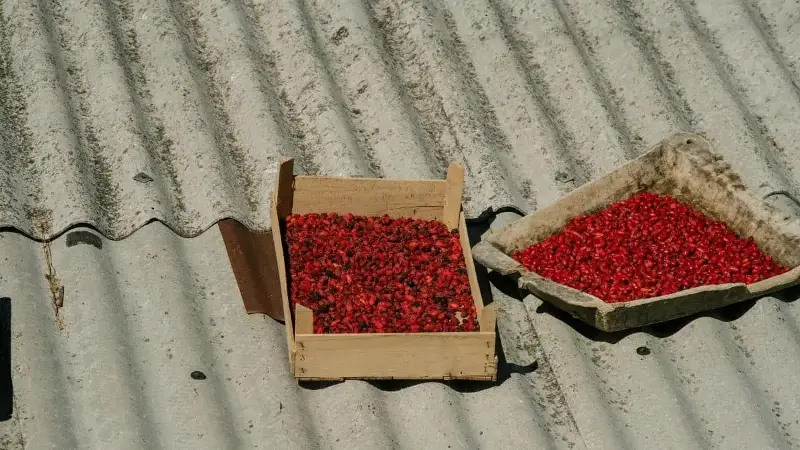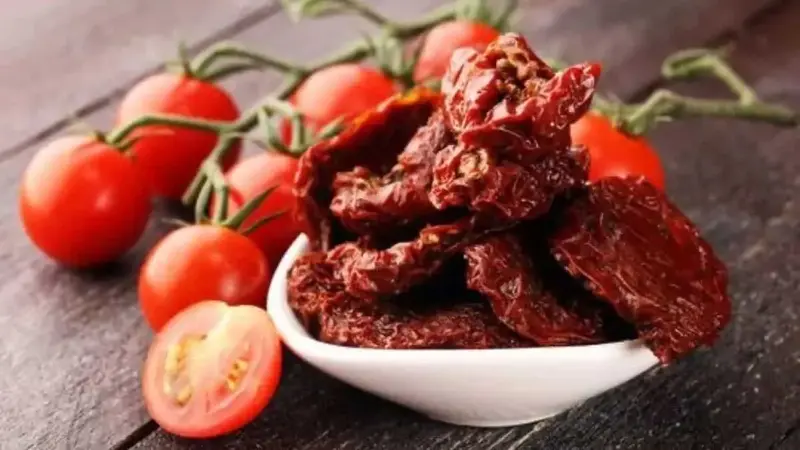
The winter sun in India has a steady warmth that feels inviting after months of heavy monsoon clouds and humid air. Across many Indian households, this sunlight has long been used to dry ingredients for later use. Solar drying, which was once limited to rural settings as sun drying, is now gaining importance in cities as people explore natural ways to store food and reduce energy use. The method uses sunlight to remove moisture from fruits, vegetables, and herbs, helping them last longer without refrigeration. In city kitchens, where storage space is often limited, solar drying can serve as a compact and sustainable alternative to mechanical preservation. With a little planning and basic equipment, this age-old technique fits seamlessly into modern routines.

Image credit: Pexels
Using The Winter Sun For Preservation
Winter in most parts of India provides stable sunlight and dry air, which together form the ideal environment for solar drying. The mild temperature ensures that food dries gradually without losing its colour or nutrients. Ingredients should be placed on trays lined with fine mesh or cotton cloth to allow air circulation. Covering them with another thin layer of cloth helps protect against dust and insects.
Balconies, terraces, or windowsills that receive direct sunlight for at least half the day are suitable spots. Vegetables such as okra, pumpkin, beans, and bitter gourd dry well under these conditions. Fruits like banana, mango, and tomato also respond effectively to this slow dehydration. Herbs such as curry leaves, coriander, and mint retain their aroma and can be stored for several months. Once the moisture is fully removed, the ingredients become lighter, more concentrated in flavour, and less prone to spoilage.

Image credit: Pexels
Also read: Sundrying: An Age-Old Practice For Food Preservation
Setting Up Solar Drying In Urban Homes
For city homes with limited sunlight, compact solar dryers are now available in Indian markets. These units are made with reflective panels that enhance solar heat and transparent covers that trap warmth. They are convenient for balconies, terraces, and even small courtyards. For a simple setup, steel trays, bamboo baskets, or wooden frames can be used. The trays should be slightly elevated to let air flow beneath.
Cleanliness is essential, especially in urban areas where dust is common. All trays and cloths should be washed and dried before use. Covering food with a fine mesh protects it from pollution or insects while allowing air to move freely. Once dried, ingredients should cool completely before being stored in glass or steel containers. Keeping the containers in shaded cupboards helps maintain texture and prevents moisture from returning.

Image credit: Pexels
Choosing The Right Ingredients
Fresh, firm, and blemish-free produce gives the best results. Seasonal winter vegetables such as carrots, chillies, fenugreek leaves, and bottle gourd are well suited to solar drying because they contain less water. Fruits like apple, guava, and amla also dry efficiently. Herbs must be cleaned gently and dried in thin layers to avoid mould.
Thin, even slices dry faster and more evenly. For fruits, a brief soak in lemon water prevents darkening during the process. Once the drying is complete, ingredients can be powdered, crushed, or kept whole. Dried chillies can be blended into spice mixes, while dried bottle gourd pieces can be added to soups or lentils. This process helps extend the life of seasonal produce and keeps their essence available through the year.

Image credit: Pexels
Energy And Environmental Benefits
Solar drying contributes directly to energy saving. It removes dependence on electric dehydrators and reduces the need for cold storage. Using natural sunlight lowers household electricity use and promotes eco-friendly cooking habits.
In several Indian cities, community solar dryers have been installed on shared terraces. These initiatives allow residents to dry produce collectively and encourage neighbourhood-level sustainability. This integration of traditional methods into modern living aligns well with current efforts to reduce waste and improve food security in urban environments.

Image credit: Pexels
Using Solar-Dried Ingredients In Everyday Cooking
Once stored properly, solar-dried ingredients can enrich everyday meals with minimal effort. Dried tomatoes can be rehydrated for sauces and gravies. Sun-dried chillies add depth to chutneys and spice oils. Dried herbs such as curry leaves and mint can flavour lentils, soups, and marinades. Dried fenugreek leaves, or kasuri methi, can enhance parathas and gravies.
Dried vegetables like pumpkin, beans, and bottle gourd can be softened in warm water before cooking and used in sambhar or dal. Fruits such as banana and mango can be ground into powders for desserts or snacks. Having a small stock of solar-dried food ensures that the taste of seasonal produce remains part of meals even after the season has passed.
Tips And Tricks For Effective Solar Drying
- Choose a spot that receives uninterrupted sunlight for at least five to six hours daily.
- Slice produce evenly to help uniform drying and prevent damp spots.
- Cover trays with transparent lids or glass sheets to retain warmth and protect from dust.
- Avoid drying on humid or foggy days, as moisture in the air can slow the process and lead to spoilage.
- Turn items once or twice daily for consistent results.
- Cool the dried produce completely before storage to prevent condensation.
- Store in airtight containers labelled with the date of drying.
- Inspect jars periodically for moisture or mould, and re-dry ingredients if required.
- Use muslin or cotton cloth instead of plastic sheets to encourage airflow.
- Keep separate trays for fruits and vegetables to avoid flavour transfer.
These small steps ensure reliable drying and help maintain quality through the months ahead.
